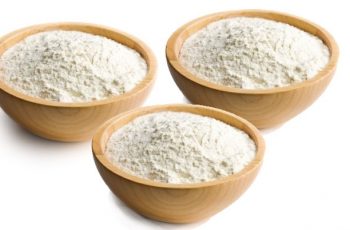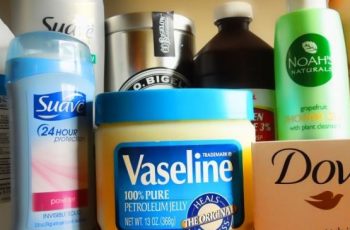How to Get Started Trading Commodities With CFDs
Most people stick to stocks and bonds in their investing. But there are many other choices for investors to diversify their portfolios. Commodities were once thought to be limited to large institutional traders. But it’s easy to trade commodities today — even if it is not easy to make money doing so.
CFDs (contracts-for-difference) are a popular way to trade on commodities. Indeed, there has been a surge of interest in CFDs lately.

What are Commodities?
Commodities are mainly products that we might use in our everyday lives and are traded on exchanges. The commodities that are traded can be subdivided into 5 categories:
- Agriculture: Cocoa, coffee, corn, oats, soybeans, wheat, sugar, cotton, lumber, soybean oil, and frozen concentrated orange juice
- Livestock: Hogs, pork bellies, cattle, and feeder cattle
- Energy: Brent crude oil, West Texas Intermediate crude oil (WTI), ethanol, natural gas, heating oil, and propane
- Precious metals: Gold, silver, platinum, and palladium
- Industrial metals: Tin, lead, zinc, aluminum, cobalt, molybdenum, nickel, and recycled steel.
Commodities are traded on various exchanges but most people use brokerage firms. In addition to direct trading of commodities, there are also many commodity derivatives.
Commodity Trading Basics
Trading in commodities can be a good way to diversify your portfolio. And trading them may be simpler than you think. A lot of commodity trading is done with derivatives.
Futures traders, for example, often sell their contracts before the expiration date. Eventually, a trader that has a use for the commodity will take possession — like a food company that needs cocoa for their chocolate dessert products.
How to Trade Commodities
There are several instruments that are commonly used to trade commodities.
- CFDs (contracts for difference) yield the difference in price between when the contract is made and its end. If the price is higher at the end, the trader makes money; if it is lower, they lose money.
- ETFs (exchange-traded funds) are like mutual funds for one or more commodities.
- Stocks provide ownership in companies that produce or extract commodities like gold or crude oil.
- Futures allow the trader to buy a commodity at a later date at a price set at the time of the contract.
- Options are contracts that give traders the right (but not obligation) to purchase a commodity at a later date. Because they pay a premium for the contract, the trader can still lose money if the commodity price goes up.
Commodity Trading With CFDs
CFDs are contracts between two people that are based on the price differences between the time that the contract is entered into and the price when the contract ends.
If the closing trade price is higher than the entry price, the buyer of CFDs will profit from the difference in these prices. The seller of the contract will then pay the buyer the difference.
If the closing trade price is lower than the entry price, the seller of CFDs will make money, because they sold or shorted the commodity. The buyer then pays the seller of the contract the difference.
When you trade CFDs, you are just speculating on the change in price, either up or down. You never own the actual commodity that you’re trading.
Examples of CFD Trades
Let’s say John has heard some news about the weather conditions in Nigeria. Since Nigeria is a large exporter of cocoa products, John wonders if he can profit from a rise in cocoa prices due to these weather conditions.
After analyzing the situation, John determines that these weather conditions could hinder the cocoa crop, causing a rise in cocoa prices. So he purchases a cocoa CFD. John’s profit will be the difference between the cocoa price when he bought the CFD and the price when the CFD is unwound (minus any commissions and fees).
Another example of trading CFDs; Bob has also heard that rainfall should be small throughout North African and the Middle East. He is interested in crude oil and believes that this will keep production high and prices low. So he would sell oil CFDs.
These examples show that it is possible to profit trading CFDs when a commodity price rises or falls. The hard part is knowing which direction the price will go.
Finding a Broker
Before you can trade, you will need to find a broker and get approved for trading in a margin account. Not all brokerage firms allow clients from every country.
For example, Plus500 does not accept clients from Nigeria. But there are brokerage firms that do allow customers from Nigeria, like eToro. Look around and choose the best one for your situation.
Note that many brokers offer demo accounts that allow you to try out CFD trading without risking any money. If you are new to trading, you should definitely use this service.
Pros and Cons of CFDs
There are advantages of trading CFDs over other forms of commodity trading:
- CFDs have no expiration date, so you don’t have to be exact with your timing of price movements.
- You can profit with either a rise or a fall in commodity prices.
- You don’t need the full amount of money to trade CFDs, you can borrow a large portion by trading on margin.
But there are also disadvantages:
- CFDs seem simple but they are actually derivatives that require knowledge and research.
- You don’t own the underlying asset.
- While trading on margin can allow you to make more money, it can also end up costing you more than you are aware you are risking.
Summary of Commodity CFD Trading
Contracts for difference (CFDs) let a trader speculate on the price movement of the commodity between the time the trade starts and ends. You can profit with rising or falling commodity prices and almost anyone can trade in commodity CFDs.
But don’t let the ease of CFDs confuse you. They are still derivatives that are very risky.

